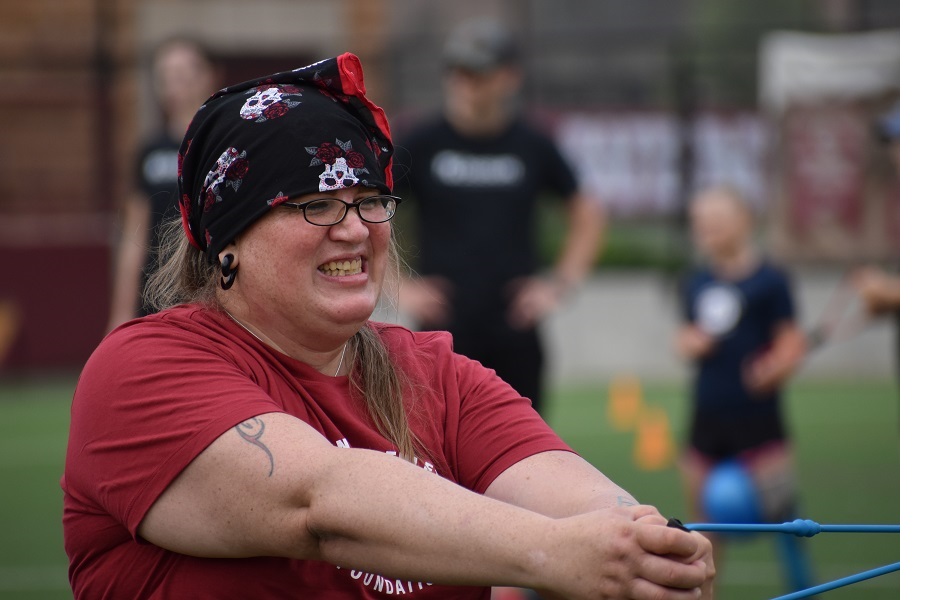There were at least four Paralympians on hand for last weekend’s amputee Mobility Clinic at the University of Denver. But it was the ordinary amputee guys and gals who made the biggest impression on us.
They had all kinds of reasons for attending the Mobility Clinic, the first to be held in person since before the pandemic began. Some were learning to use a running blade; others were focused on gait, flexibility, stamina, or strength. And nearly all wanted to connect with some other amputees, share a few laughs, learn some drills and skills, and maybe find a new workout buddy.
Cosponsored by Össur and the Challenged Athletes Foundation, the Mobility Clinics welcome amputees of all sizes, shapes, ages, and ability levels. Meet a handful of the Denver attendees below, then check the calendar to find out where and when the three remaining 2021 Mobility Clinics will be held.

When we complimented Dan Stuart (pictured at right) on his running form, he arched an eyebrow and said: “For real? It feels incredibly weird.”
Stuart told us he signed up for the Mobility Clinic with more than physical fitness in mind. Since losing his leg in a motorbike accident, he’s battled depression and endured setbacks in both his personal and professional life. The clinic offered a way to generate some positive momentum that felt real to him, unlike “all that rah-rah stuff” (as Stuart calls it) that he encountered in other settings.
When the clinic kicked off at 9 a.m., Stuart was taking wobbly baby steps on his running blade. Within 90 minutes, he was jogging in long, smooth strides. It might have felt weird to him, but it also felt like forward progress.

Elle, pictured at left, was one of many participants who showed up without a running blade. “Medicaid only pays for one prosthesis,” she reminded us. She gamely completed all the exercises (including the running) on her regular, everyday walking-around device.
Elle was 100 pounds lighter and a good athlete before limb loss. We asked if she planned to turn some of the skills she learned at the clinic into permanent habits. “I hope so,” she replied. “I need to get back in shape.”

We didn’t get a chance to meet this gentleman, but we did notice that he took part enthusiastically in the stretching, balance, and strength drills. When the coaches turned their focus to running, he remained attentive despite lacking the physical ability to join in. We presume he was filing the information away for a later date, when he’s built up the stamina to ambulate with more independence.

This is Ray Klomp, age 77, who lost both legs to diabetes about a decade ago. He grew up a stone’s throw from the lacrosse field where the Mobility Clinic was staged. “This used to be the football stadium,” he says.
Klomp makes it a point to stay fit for two reasons: so he can continue driving, and so he can keep sliding underneath his ’63 Corvette when it needs a little work. “They told me I’d have to use hand controls to drive,” says Klomp, but he’s learned to operate the pedals with his prostheses.

Six-year-old Clayton Simon, one of about half a dozen children in attendance, was a special guest at the Denver Mobility Clinic. He received his first running blade at the event, courtesy of Össur and CAF. At first, this bashful fellow seemed unsure whether the gift was worth all the trouble—he squirmed uncomfortably during the presentation, as a bunch of adults and TV cameras trained their gazes on him. And his first steps with the new prosthesis were understandably awkward. But his eyes lit up after a little private coaching from Paralympic triathlete Jamie Brown and a group session with gait guru Bob Gailey. By noon he was running circles around most of the grownups and making everybody present feel a little younger, sprier, and happier.
More images below:






